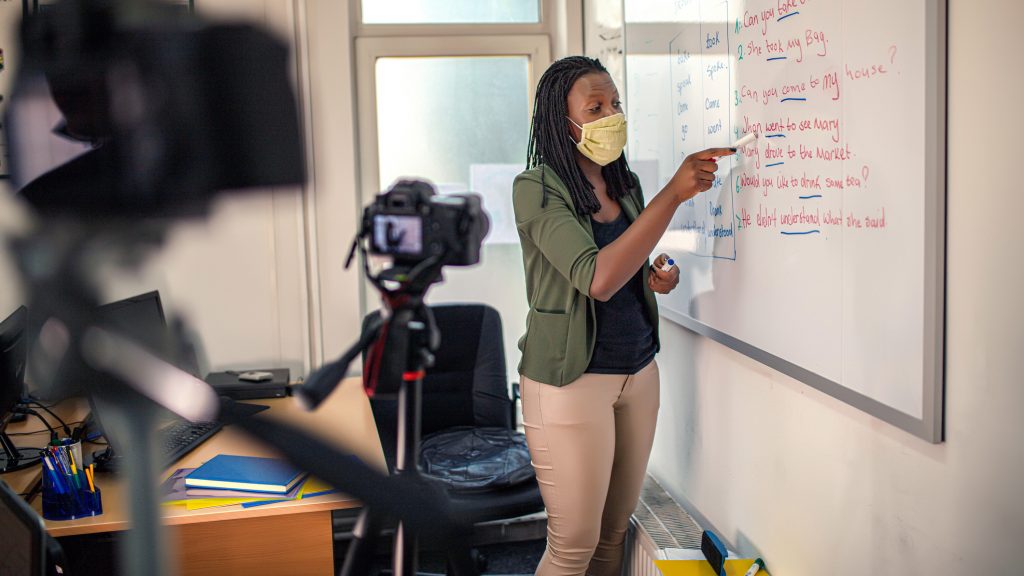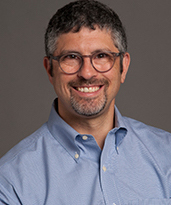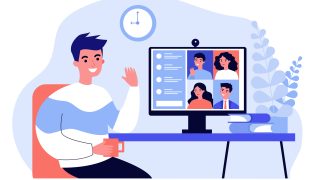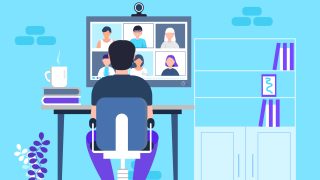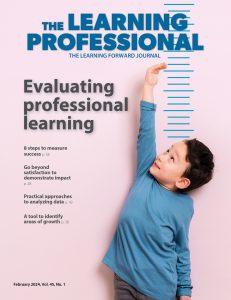Nearly a month into the new year, the rollout of COVID-19 vaccines makes it more likely that more students and educators will return to in-person school in 2021. But until then, the year of living and learning with COVID continues. As learning losses accumulate, millions of students remain in hybrid learning models that, despite best intentions, aren’t working well for many.
This is likely to be an ongoing issue. Families are expected to keep demanding remote options, especially if they or their communities are at high risk for the virus. Schools may need to continue limiting the number of students in buildings at one time in order to follow public health guidance to continue physical distancing measures even after vaccinations have begun. Hybrid models are likely to remain a part of our K-12 ecosystem for some time to come.
Hybrid learning is likely to remain a part of our K-12 ecosystem for some time to come. Here's how to improve your hybrid model. Click To TweetFortunately, hybrid models can be better. That’s because many of today’s hybrid schools are designed with features that make it difficult for educators to address students’ needs, but they can and should be redesigned, with high-quality professional learning as a core component.
Many hybrid school models rely heavily on a mix of simultaneous and asynchronous learning. These approaches are not well-matched to the needs of students or educators. In simultaneous (or concurrent) instruction for both remote and in-person learners, remote learners “Zoom in” to in-person classes. Remote learners in these classrooms are force-fit into an in-person model that isn’t designed to support them. Without intensive support and planning, teachers often end up focusing instruction primarily on either in-person or remote students. In asynchronous instruction, students complete their work independently. To the average parent, asynchronous school often looks like homework that is done during the school day. While asynchronous time can be scheduled and used effectively, it too easily becomes a black hole of lost learning time.
A more effective hybrid model would leverage deeper teacher collaboration to create richer, more robust learning experiences for students and teachers. With such an approach, we can make improvements for this school year and lay the groundwork for next year and beyond. What do such models look like?
First, they differentiate in-person and remote experiences. In many elementary schools where groups of students have a mix of in-person and remote time, such as those in Dudley-Charlton, Massachusetts, in-person time is dedicated to core instruction while art, music, and PE are offered during students’ remote time. Other schools allocate in-person and remote days to different kinds of activities. In-person time may be targeted to provide small-group and one-to-one support to students with special needs, English language learners, and students with the greatest learning loss. Alternatively, some schedules allocate remote time for flexible targeting of student supports through office hours or dedicated intervention blocks. In all of these cases, school teams have offset the added complexity of teaching during COVID by enabling teachers to plan for and then provide instruction to specific groups of students in specific modalities.
Second, they prioritize team-based planning to flexibly and creatively address the unique needs of remote and hybrid learning. As is the case in many schools, teachers at Brookside Elementary in Indianapolis, Indiana have more collaborative planning time than in prior years. With this time, grade-level teams work together to plan a daily morning block where one teacher introduces a new concept to all students in the grade. Other teachers and re-assigned support staff troubleshoot technology challenges and help facilitate break-out groups. Grade-level teams can vary responsibilities over time, with different teachers taking lead and small-group roles depending on individual expertise, interest, and professional learning goals.
Third, they adapt structures and policies to facilitate the kinds of changes described above. Leaders might need to create (or negotiate) more flexible class size maximums, altered student seat time mandates, and different student-teacher assignments. Making the adjustments to improve hybrid learning will also require that leaders allocate significant blocks of time and sufficient resources to curriculum-focused, expert-led, collaborative professional learning that helps set teachers and students up for success.
We have the power, the research, and the tools to create better structures that could yield measurable benefits in 2021 and beyond. In many cases, the main barrier to improving hybrid and remote models is a willingness to recognize what is and isn’t working, and the vision to change.

